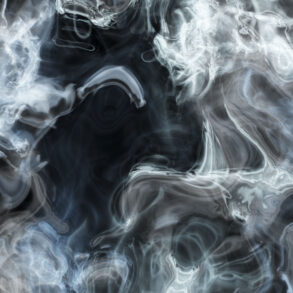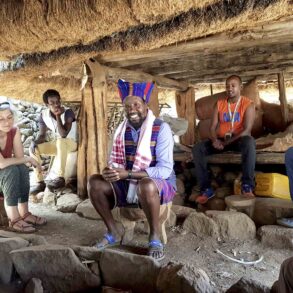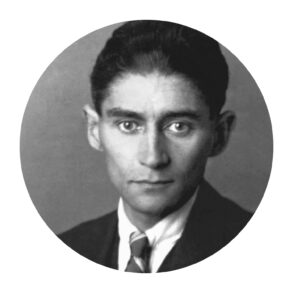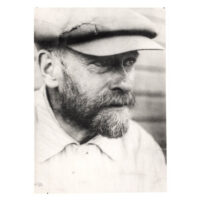For Rudolf Steiner, the ruin after the fire signalled not only the defamation of anthroposophical work, but also the failure of the Anthroposophical Society to adequately protect the building. The smoke at the ruins of the Goetheanum had hardly cleared before Rudolf Steiner said: «And I hope, of course, that there will be no interruption of any kind in any direction here.» As a result, the fire became a caesura in the development of anthroposophy and not an obstacle.
Rudolf Steiner was scarred by the night of the fire. «One feels, if one was connected with the building in love, the merciless flames painfully penetrating the sensations that poured into the dormant forms and into the work attempted therein,» Steiner wrote in the weekly journal ‹Das Goetheanum›.1 Despite the dramatic events of the night and the sight of a «burnt-out city» (I. Rennefeld,) Steiner had the carpentry workshop, which was flooded and filled with soot, dirt and stench, cleaned up on New Year’s Day so that he could continue the course ‹The Origins of Natural Science› in the evening. «You can […] rest assured that I will never allow myself to be diverted from my path, no matter what happens. As long as I live, I will represent my cause and represent it in the same way as I have represented it up to now. And I hope, of course, that there will be no interruption in any direction here,» Steiner told the workers at the Goetheanum on January 5th, 1923.2 There was to be no ‹interruption› in the anthroposophical work at the site – despite the inferno. For it was precisely such an interruption that the opponents of anthroposophy and the building were hoping to achieve.3
What was needed was not lamentation and recrimination but something quite different. Rudolf Steiner no longer gave any lectures in which he addressed the aversive forces but spoke only about obligations incumbent on the Anthroposophical Society itself. The acquisition and consolidation of inner strength and clarity was a priority – «Study the tragedians of all periods. You will see that tragedy lies in the fact that everything external seems to collapse and that the strength that leads beyond the catastrophe is only to be found within.»4 It is essential to work from the «centre of the spiritual,» undeterred by external obstacles and setbacks – and this especially where the content and civilisational intent of the humanities are at stake: «That in spite of all strokes of fate, even in spite of all favourable strokes of fate, the inner energy in working out of the centre of spiritual life does not flag – upon this depends that which is to be achieved, and can be achieved with the anthroposophical movement.»5 External success or failure does not count in this perspective, but only that which means something and «which emerges from the inner force and the inner impulses of the cause itself.»6
For Rudolf Steiner, the ruins of the fire signalled not only the level of defamation and hatred that anthroposophical work faced, but also the failure of the Anthroposophical Society to adequately protect the building – either through its public presence (including rectifying alienation and defamation) or through inner, spiritual work at the site. «The building would have needed a strong Anthroposophical Society to stand by it.»7 Without a «strong, energetic Anthroposophical Society behind it» a new building was also pointless.8 As early as midday of the New Year’s conference, Steiner told Count Polzer Hoditz that the «failure of members to be awake» had contributed significantly to the destruction: «The possibility was provided to have the space of the word among us, but the space of the word can only be if it has its counterparts, its living image in the heart, in the conscientious use of the word, that is, if the human being does not just listen, but wants to and is able to bear responsibility, as a human being answerable to the ‹Word of the World›. That was the meaning of the building: word and answer, Logos and human beings.»9 The Goetheanum was never conceived by Steiner as a mere meeting place, nor as a theatre, but as a free university of the humanities from which constructive forces and humanistic initiatives in numerous fields of life were to emanate. It was about «the word and the answer» – about taking responsibility for the Michaelic forces in the conflicts of the present and future. The idea of the university was barely understood though, nor was it taken up in circles of the Anthroposophical Society,10 and as a result neither was the meaning and purpose of the building. Rudolf Steiner was to spend the whole of 1923 struggling to achieve the necessary reorganisation of the Anthroposophical Society11 – and he continued to represent the scientific mission of the Goetheanum publicly, for example with his brilliant lecture ‹The Aims of Anthroposophy and the Purpose of the Goetheanum› which he gave in various Swiss cities in April, 1923.12 It was not only the journalists from Basel – who came to the lecture in the Hans Huber Hall of the City Casino – who had expected Steiner to appear broken after the destruction, they were, however, taught otherwise. «Dr Steiner freely admitted that the pain of the loss was too great to be described. However, on the other hand, so much inner fire, so much indomitable force resounded from his words, that even we – who do not agree with the principles of anthroposophy – came to the conclusion that the movement in Dornach had not only not lost any vitality due to the New Year’s Eve catastrophe, but on the contrary had received significant impetus.»13
The Anthroposophical Society received this ‹significant impetus› one year after the night of the fire at the Christmas Conference in 1923/24 – and in his last lecture at the Goetheanum on the evening of December 31, 1922, Rudolf Steiner spoke about the future impulses of the earth, which cannot come from natural kingdoms and forces, but only from the soul-spirit of the human being. «Only, and solely if we can put into this earth something which it does not have, can a future earth come into being. That which is not there by itself on the earth, that is, the effective thoughts of man […]»14
Translation Christian von Arnim
Image First Goetheanum after the fire. Image source: Rudolf-Steiner-Archiv
Footnotes
- GA 36, p. 322.
- GA 259, p. 71.
- Cf. Peter Selg, Der Brand des Goetheanum und die Zukunft der Anthroposophie. Dornach and Arlesheim 2022.
- GA 259, p. 156.
- Ibid., p. 147.
- Ibid.
- Ibid., p. 208.
- GA 257, p. 15.
- In: J. E. Zeylmans van Emmichoven, Wer war Ita Wegman. Eine Dokumentation. Vol. 1. Heidelberg 1990, p. 121 ff.
- Cf. Peter Selg, The Michael School: And the School of Spiritual Science. Hudson, NY, 2016.
- Cf. GA 259 und Peter Selg, Die Identität der Allg. Anthroposophischen Gesellschaft. Arlesheim 2012.
- Cf. CW 84. Reprint of the Basel lecture most recently in Peter Selg, Der Brand des Goetheanum […], op. cit.
- In: Wolfgang G. Vögele, Der andere Rudolf Steiner. Dornach 2005, p. 285 f.
- GA 219, p. 190. Context of the lecture cf.













